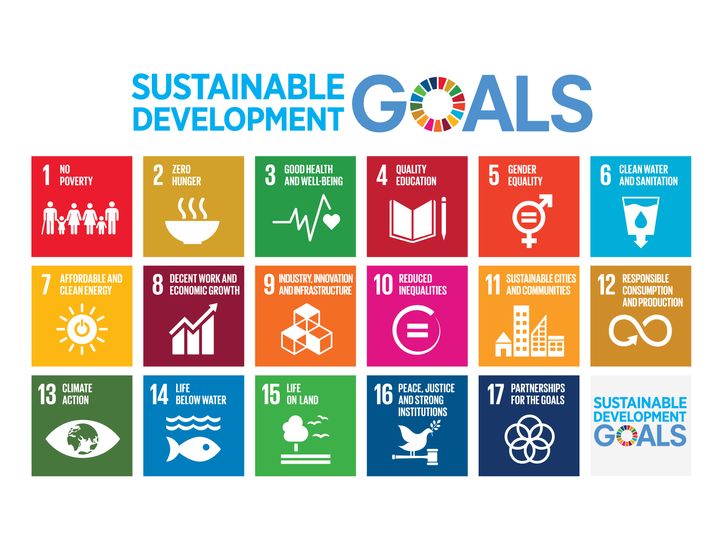
As the new administration settles in at the White House with the coordinated grace of a woolly mammoth, and as the #womensmarch marchers quickly try to organize their phenomenal movement into something sustainable, the business sector is conducting business as anything-but-usual.
Directed by an increasing critical mass of CEOs and Boards of Directors, and supported by increasingly engaged stakeholders and employees who understand the dangers of global warming, global corporations whose names you know well are moving swiftly to reduce and even eliminate their carbon emissions. They are not dragging their feet; they are not skeptical or in denial. Massive corporations are taking bold action, and they are acting now.
A sizzle of new examples:
· By year end, Google will supply its global operations with 100% renewable energy, in partnership with Spanish solar provider Acciona Energia. Neighbors won’t complain about this elegant display in the Chilean desert. Details here.
· The zero-emissions consortium RE100 announces that signatory Goldman Sachs jumped to 86% renewable energy in 2015, up from 14% in 2014, reflecting the epic plunge in cost of solar and wind sources.
· Ahead of Davos 2017 last week, 630+ companies and investors, including DuPont, Johnson & Johnson, Levi Strauss, Mars, and PG&E reaffirmed their support for policies to accelerate a low-carbon economy and curb climate change.



Saving the planet while growing a profitable business is a lot easier if you have a flexible framework to use.
Fortunately, here it is: a colorful matrix called the Sustainable Development Goals. Kudos to the designers: this is a user-friendly piece that could be at home in a kindergarten classroom, and it is increasingly the deadly serious organizing tool of choice.
Seventeen brightly colored blocks are deceptively cheery; on first examination it’s too much by a ridiculous margin. It’s, well, everything. Have a look up top: it’s literally every big hairy audacious challenge in the world.
That’s the point. The United Nations created the SDGs in advance of the 2016 Paris COP21. They didn’t want to miss anything important.
You don’t need to be reminded that the #ParisAgreement is the historic compact achieved a year ago by coordinating 198 countries to stop carbon emissions. “It took us several generations to accomplish this,” one US Senator remarked to incoming Secretary of State Rex Tillerson at his confirmation hearings earlier this month.” Don’t you dare unwind this was the underlying vibe.)

We’ve seen executives and their teams use the SDGs until the document is a dog-eared, marked-up, shared reviewed, well-worn friend. The numbered, colored blocks might turn up in a board presentation, in an Annual Report or on a home page; plastered onto the side of a corporate headquarters building (see my snapshot of Pfizer office in Manhattan).

Think of these 17 principles (and their 169 detailed “targets” within) as a length of aspirational fabric that can be tailored, snipped, and tucked to fit specific business objectives on the ground.
One SVP created a Mondrian-esque matrix on the wall of his office, with cross-functional goals and targets running down the Y axis and the 17 SDGs providing the X header. The resulting squares are filled in with notes from his team, according to aligned prioritization. This way, company XYZ’s strategy maps to the capacious SDG framework.
Instead of feeling overwhelmed, employees operate within a tethered global context to get the job done. Their plan is right on the wall, easy to grasp; and it’s in fluent complement to the worldwide community of private enterprise, municipalities, and nation-states all committed to a carbon-free future.
For a worldwide consumer health retailer, the checks might go like this:
GOAL 3. GOOD HEALTH AND WELL-BEING: —check. This is the core business.
GOAL 5. GENDER EQUALITY: —check. Women’s health, employee engagement, and worker conditions are key.
GOAL 6. CLEAN WATER AND SANITATION: —check. Major emphasis in Africa and southeast Asia, especially; and, increasingly, in areas of the US affected by extreme weather
GOAL 7. AFFORDABLE AND CLEAN ENERGY: —check. This particular company produces 100% of its power from renewables and is moving to hydrogen trucks.
GOAL 12. RESPONSIBLE PRODUCTION AND PRODUCTION: —dotted check. A transformational waste reduction program will be deployed across global business units in Q2, as part of a comprehensive life-cycle strategy involving suppliers and distributors up and down the chain.
One does not check all the boxes; that’s not the point. Focus on the goals that are most relevant to your particular business, in accordance with your roadmap, as an inspiration to stretch further, better, and faster.
Each target, every key performance indicator, all the things nestle in their cleverly assigned, neatly labeled colored boxes. What could be more efficient than that?
